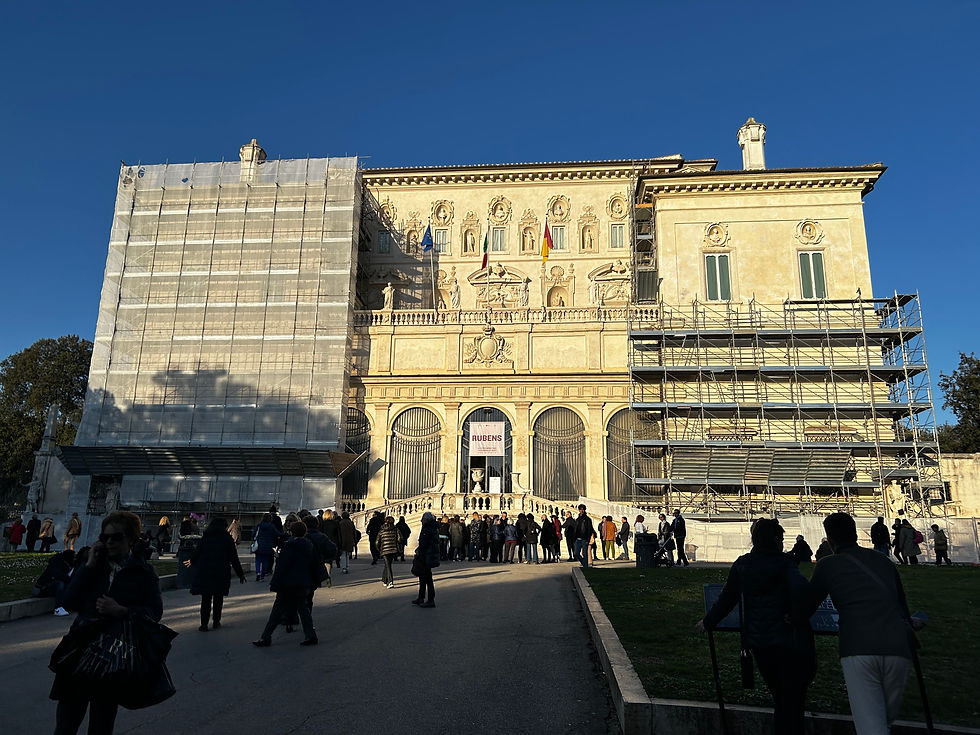Rome City Tour, Part Two
- Marianne Hartner-Godown

- Mar 25, 2024
- 3 min read

Walking across the Tiber River
Crossing the Tiber River we headed toward the beautiful and charming Trastevere neighborhood. The name Trastevere comes from the Latin trans Tiberim, which translates as ‘across the River Tiber’. This district has its history in the Imperial Age, when money came into the district and many important figures like Julius Caesar chose to build their villas in the area. It is this mix of wealth combined with architecture from the Middle Ages that gives Trastevere its irresistible charm. With its appealing old-world vibes, cobbled streets filled with clusters of shops, bars, and restaurants, and old buildings with exposed woodwork, Trastevere is home to some of the best hidden gems of Rome.

One of the streets in the Trastevere neighborhood
It was in this neighborhood where we stopped for a quick lunch of traditional Roman pizza. Some people had told us that the pizza in Rome is disappointing, but we certainly did not find that to be the case for us! We enjoyed trying the local potato pizza and caprese pizza. Most of the Roman pizza we saw was pizza al taglio, or ‘pizza by the cut’. It is typically rectangular-shaped, cut to whatever size you wish to have, and is sold by weight.

Couldn't wait long enough to get a picture before taking a bite! 😝
There is so much to see and do in Trastevere! We could spend days exploring the neighborhood and its historical churches, fresh food markets, and some of the city’s coolest bars and restaurants, but we had more to see and daylight was burning.
Next we walked to the Jewish Quarter, the oldest Jewish community in all of Europe.
Though the neighborhood now commands some of the highest property prices in Rome, the original Jewish Quarter (also known as the Roman Ghetto) used to be walled-in and crowded. Its borders were ordered by a decree from the Catholic Church, along with various discriminatory laws about what professions Jews could hold. It was built on low, undesirable, malarial land subject to regular floods from the Tiber River. Life here was pretty dismal until the walls were torn down in 1888 by the Kingdom of Italy. Jewish culture then grew and thrived in the Jewish Quarter, but sadly the neighborhood also witnessed one of the most heart-wrenching episodes of the Nazi occupation during the Second World War. Despite this area’s troublesome history, this district is today a fascinating neighborhood full of beautiful synagogues, delicious kosher cuisine, and a thriving Jewish community.

A multi-story building in the Jewish Quarter
On our way back through Trastevere back to our hotel, we made a quick stop at the Basilica di Santa Maria. This stunning basilica is believed to be the first official place of Christian worship in Rome. The original church was founded by Pope Callistus I around 220 A.D., and many parts of the church, including its mosaics, date back to the 12th century. Like many churches in Rome, the Basilica di Santa Maria is open to the public and there is no charge to pop inside and admire the incredible architecture and artwork. And don’t forget to look up at the ceilings! 🤩
L: The Piazza di Santa Maria
R: The Basilica di Santa Maria. Just look at that wooden ceiling and incredible mosaic floor!
There was so much to take in on our first full day in Rome, and we believe that booking a city tour on your first day in a new city is fundamental in helping you to get your bearings right away. Federica was also wonderful in suggesting a few restaurants and things to do during our visit. If you want a high quality, private tour around Rome, let us know and we’d be happy to connect you with her!

Our wonderful guide, Federica








Comments